Kabocha is naturally sweet with a smooth velvety texture, which makes it perfect for making Korean pumpkin porridge (hobakjuk). This porridge is so comforting that it makes me think of lazy days spent in a warm and cozy bed. It's especially satisfying to cook and eat on cold fall or winter days. Sweet rice balls (known as tang yuan in Chinese or Taiwanese cuisine) are typically served with this pumpkin porridge. They add a chewy but soft texture to the dish and are super easy to make. When hobakjuk and tang yuan meet, I can't resist.

click below to watch how to make korean pumpkin porridge with sweet rice balls
Turn on your volume to hear the sounds of cooking. Cooking can be meditative and is a great opportunity to slow down, relax, and engage in your senses. Read more on our about page.
korean pumpkin porridge (hobakjuk)
Hobakjuk ("juk" meaning porridge) is a Korean style porridge made with pumpkin and sweet rice flour. It's velvety smooth and is great as a comforting snack, breakfast, or dessert.
I'm not big on desserts, so the subtle sweetness in this porridge is perfect. It's just sweet enough for you to satisfy a craving, yet not too sweet where you feel sick after eating a large bowl.
note: if you're a desserts person, this recipe may be too light as-is. Try to season to taste with more sugar after you blend the cooked kabocha squash.
refined sugar substitute
Rather use an alternative to sugar? You can try blending in a soft and de-seeded dried medjool date instead. This way, you can adjust the sweetness to your own liking.

fresh sweet rice balls (tang yuan)
Sweet rice balls (tang yuan) are also used in traditional Chinese and Taiwanese desserts, oftentimes shared as a family on Chinese New Years Eve. Yuan means "round," which symbolizes togetherness. So families that eat tang yuan together on New Year's Eve will stay together in harmony for the new year.
You may have noticed one sweet rice ball in each bowl is colored red, which symbolizes luck and happiness in Chinese culture. That's why traditional wedding dresses are red instead of white. If you've read this far, I hope that random fact will come in handy for you someday!
here's how to get started on this easy recipe

INGREDIENTS YOU'LL NEED FOR THIS RECIPE
- 1 kabocha squash (about 4 pounds)
- water
- 1-inch piece of fresh ginger
- ½ cup sweet rice flour
- sugar, optional
- 1 tablespoon toasted black sesame seeds
cooking equipment and pantry items you may need
Note: Some of the links below are affiliate links, which means we do make a small profit from your purchases (your price is not affected by this commission). We are a participant in the Amazon Services LLC Associates Program, an affiliate advertising program designed to provide a means for us to earn fees by linking to Amazon.com and affiliated sites. If you click on an affiliate link, you consent to a cookie being placed on your browser for purposes of tracking commissions.
how to make korean pumpkin porridge – step by step
lessons learned: I use to spend unnecessary time and elbow grease to peel kabocha squash by either using a really sharp vegetable peeler or slicing away the peel with a knife. That's definitely not the way to do it and I've learned my lesson.
how do you prepare kabocha squash?
First, give it a good rinse. Then cut the kabocha squash into quarters (photos 1 - 2).
Be sure the place the flat sides down on the cutting board when cutting so the squash doesn't move around.
Scoop out the seeds using a spoon (photos 3 - 5).
Place the kabocha squash pieces cut side up in a large pot and fill with 3 cups of water. Add ginger slices (photo 6) into the water.
Bring to a boil over medium-high heat, cover, and reduce heat to simmer for 20 minutes. This essentially steams the squash without using a steamer pot! The squash should be tender and easily pierced with a knife when done and will be a lot easier to peel once cooked.
Prepare the sweet rice balls while the kabocha squash cooks.
how to make sweet rice balls (tang yuan)
In a medium mixing bowl, combine ½ cup of sweet rice flour and ⅛ teaspoon sugar with 3 tablespoons of just boiled hot water (photos 7 - 8). The sugar is optional since sweet rice flour is already slightly sweet.
Stir the dough with a small spatula and knead with your hands once the dough is cool enough to touch (photos 9 - 12).
Knead until it's soft and smooth like play-doh (photos 13 - 16) . If needed, add more hot water little by little between kneading until the dough isn't too dry.
Using your hands, roll the dough on a cutting board into a long cylinder shape (about ½ inch diameter, photos 17 - 18).
Cut the cylinder into 18 - 32 pieces based on your preference of size (photos 19 - 22) and form each piece into a sphere by rolling in between the palms of your hands (photo 23).
TIP: Keep the dough covered with a damp towel to prevent them from drying out (photo 24).
In a small saucepan, cook the sweet rice balls in rapidly boiling water until they float to the surface (about 2 minutes). Strain and store in a container with cold water.
mise en place – ingredient prep table for an easy to reference to-do list
Here is an ingredient prep table that summarizes the steps mentioned above. It's useful when you want to be able to quickly glance at a to-do list while cooking instead of re-reading recipe instructions over and over again.
| ingredient | qty | prep |
| kabocha squash | 1 (4 pounds) | rinse / wash steam with 3 cups of water and ginger (optional) for 20 minutes |
| ginger, optional | 1 inch piece | thinly slice |
| sweet rice flour | ½ cup | measure out |
| sugar, optional | ⅛ teaspoon | add to sweet rice flour if using |
| water | 3 tablespoons | boil mix with sweet rice flour mixture to create dough |
| sugar, optional | ~1 teaspoon | add to kabocha puree if needed |
| toasted black sesame seeds | 1 tablespoon | for topping finished dish |
finishing touches for korean pumpkin porridge
When the cooked squash is cool enough to handle, scoop out the flesh with a spoon to remove the skin (photo 25).
Combine the peeled squash pieces and remaining water from the pot (without the ginger) into a blender and blend until smooth (photo 26).
Add sugar to taste if the squash isn't as sweet as you'd like (about 1 teaspoon). Be sure to taste the puree first before adding sugar though. Depending on the season, certain kabocha squashes can be quite sweet naturally. Blend again to combine.
Serve hot or warm and top with the cooked sweet rice balls and toasted black sesame seeds.

COOKING WITH KIDS - what can the kids help with?
- scooping seeds out of kabocha
- shaping sweet rice balls
- tasting kabocha puree
what are some possible ingredient substitutions?
- Fairytale pumpkins can be used instead of kabocha squash, though I prefer kabocha since it's is naturally sweeter and smaller
- Regular toasted sesame seeds can be used instead of black sesame seeds
- You can omit the ginger if you like. It adds a subtle spice.
you can also add different toppings such as:
- cooked jujubes
- cooked and lightly sweetened azuki red beans
- toasted seeds (pepitas / pumpkin seeds or sunflower seeds for example)
- toasted and crushed peanuts
- thinly shaved coconut

This recipe is my take on the traditional hobakjuk. I don't use sweet rice flour in the pumpkin purée because kabocha squash is naturally sweeter than other pumpkin varieties and gives this dish a wonderfully smooth texture, so the addition of sweet rice flour isn't needed.
The first time I made Korean pumpkin porridge was when a client requested it, so I have her to thank for introducing me to this recipe. Before that, I had only been using kabocha squash for savory soups and dishes.
I hope you enjoy making and eating this comforting treat as much as I do!
Happy cooking! ~ Cin
recipes that go well with hobakjuk
- roasted fuyu persimmon and asian pear with brussels sprouts and radish would complement this dish well if you want to make it into a meal
- sweet and savory sautéed green beans with basil
- colorful vegetarian kimchi fried rice
- ginger lemon honey tea
- browse all vegan recipes
- bibimbap korean rice bowl by recipetin eats
Please give this recipe a star rating below and leave a comment. I would appreciate it so much and would love to hear about your experience or if you put your own twist on the recipe. Show off your results by taking a photo and tagging @thesoundofcooking on Instagram. I would love to share what you come up with!
Disclosure: The recipe below may contain affiliate links. As an Amazon
korean pumpkin porridge with sweet rice balls (when hobakjuk and tang yuan meet)
watch it step-by-step: the sound of cooking® video
ingredients
kabocha squash
- 1 kabocha squash, rinsed/washed (about 4 pounds)
- 3 cups water
- 1 inch piece ginger, thinly sliced, optional
sweet rice balls - tang yuan (makes approximately 32 small balls)
- ½ cup sweet rice flour
- ⅛ teaspoon sugar, optional
- 3 tablespoons water just boiled
finishing touch
- 1 teaspoon sugar, optional to taste
- 1 tablespoon toasted black sesame seeds, divided
*The Instacart button above is an affiliate link, which means we do make a small profit from your purchases (your price is not affected by this commission).
instructions
cooking the kabocha squash
- Cut the washed kabocha squash (pumpkin) into quarters. Scoop out seeds using a spoon.
- Place kabocha squash pieces cut side up in a large pot and fill with 3 cups of water. Add ginger slices into the water. Bring to a boil over medium-high heat, cover, and reduce heat to simmer for 20 minutes. The squash should be tender and easily pierced with a knife when done.
prepare the sweet rice balls while the kabocha squash cooks
- In a medium mixing bowl, combine the sweet rice flour and sugar with just boiled hot water. Stir with a small spatula and knead with your hands once the dough is cool enough to touch. Knead until soft and smooth like play-doh. If needed, add more hot water little by little between kneading until the dough isn’t too dry.
- Using your hands, roll the dough on a cutting board into a long cylinder shape (about ½” diameter). Cut the cylinder into 18 - 32 pieces (based on your preference of size) and form each piece into a sphere by rolling in between the palms of your hands. Keep the dough covered with a damp towel to prevent them from drying out.
- In a small saucepan, cook the sweet rice balls in rapidly boiling water until they float to the surface (about 2 minutes). Strain, place in a container and cover with cold water.
making kabocha squash porridge
- When the cooked squash is cool enough to handle, scoop out the flesh with a spoon to remove the skin. Combine peeled squash and remaining water from the pot (without the ginger) into a blender and blend until smooth. Add sugar to taste if the squash isn’t as sweet as you’d like (about 1 teaspoon). Blend again to combine.
- Serve hot or warm and top with cooked sweet rice balls and toasted black sesame seeds.
notes
you may also like these vegetarian recipes













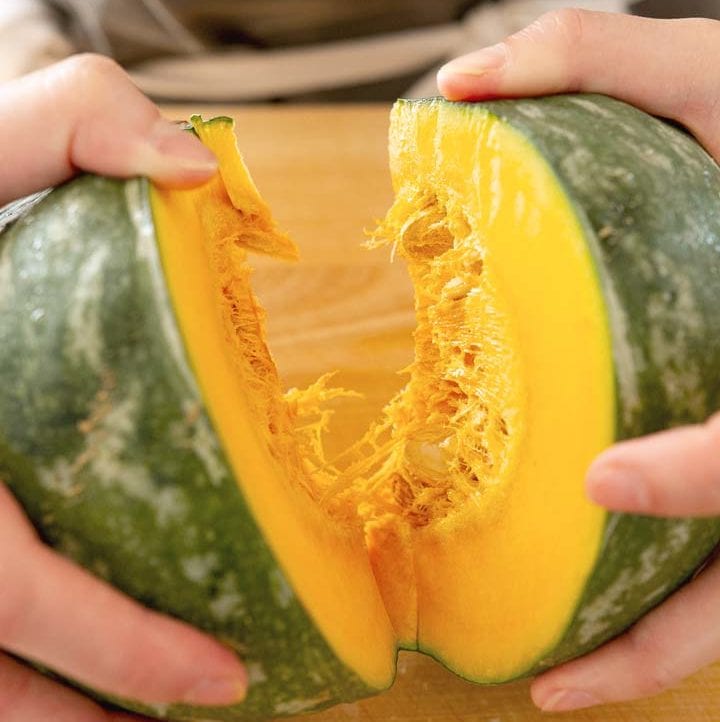




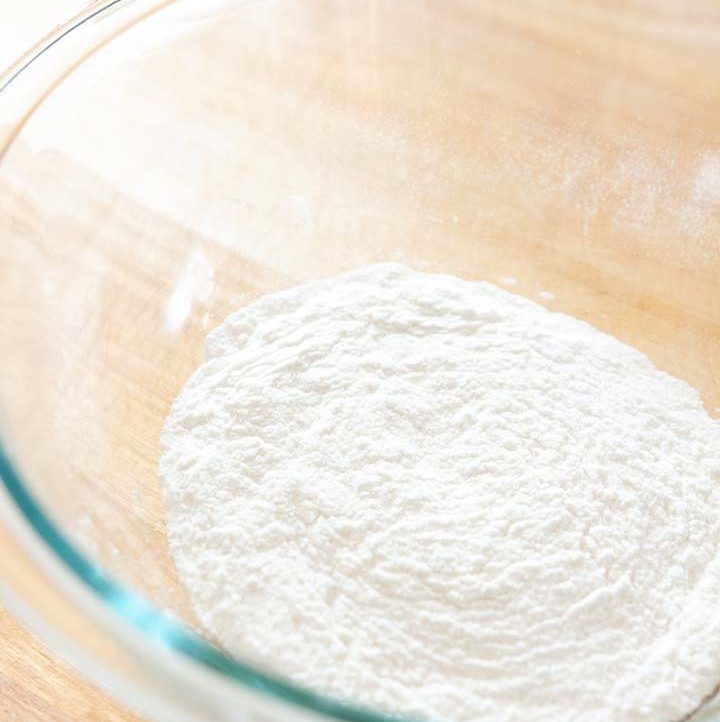




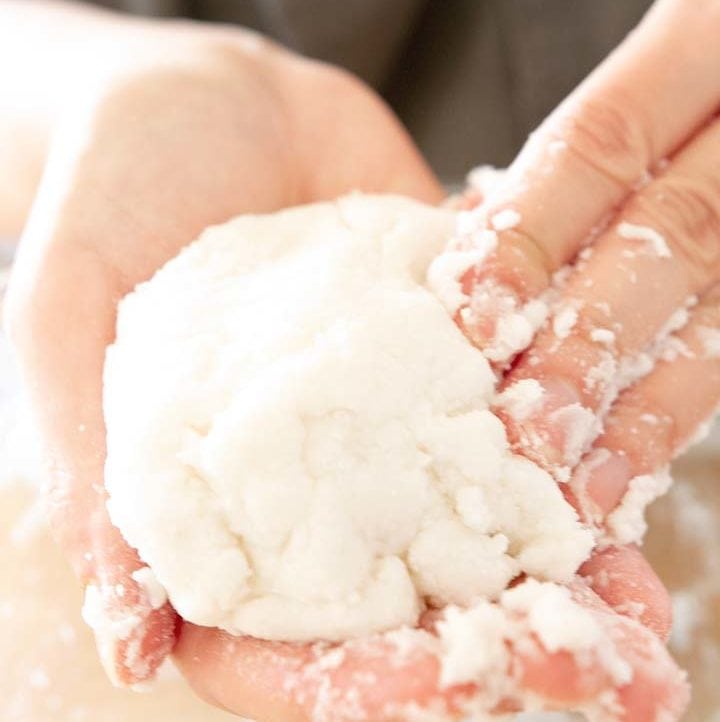




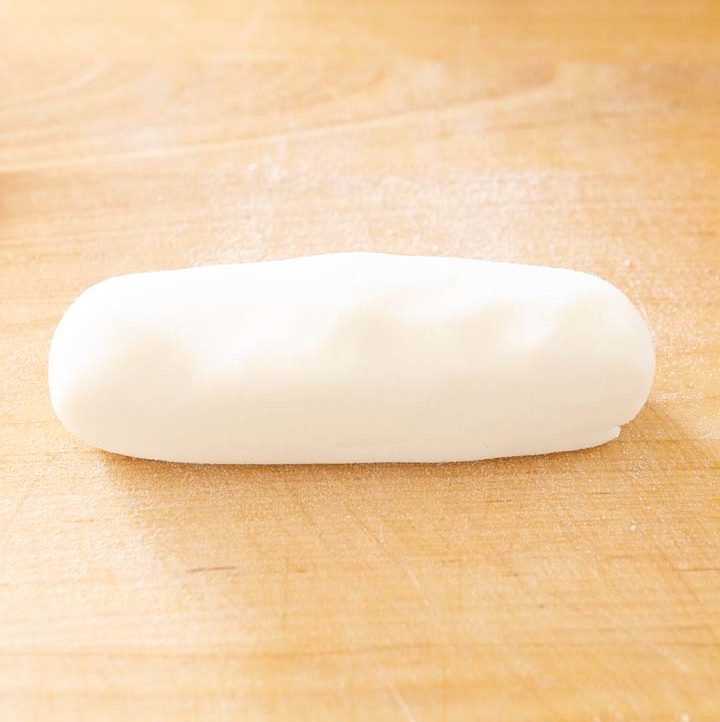
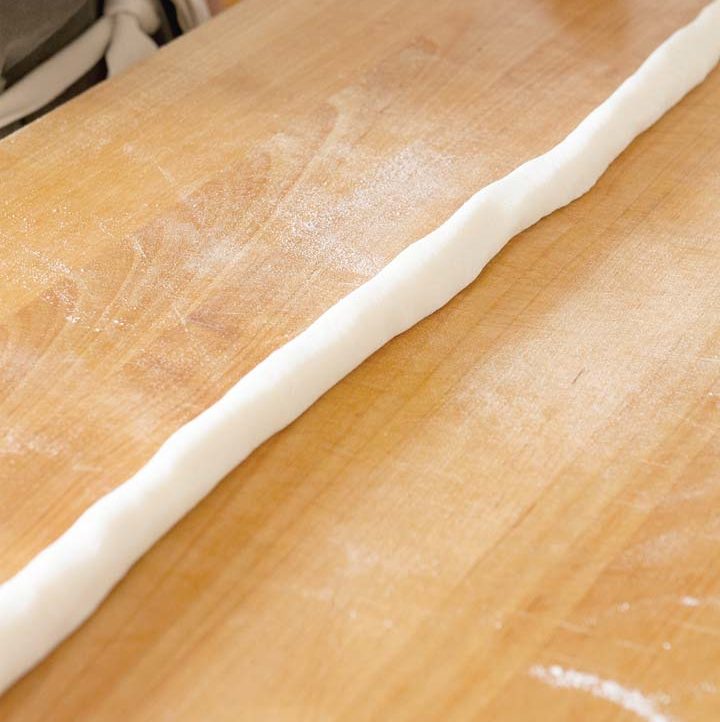

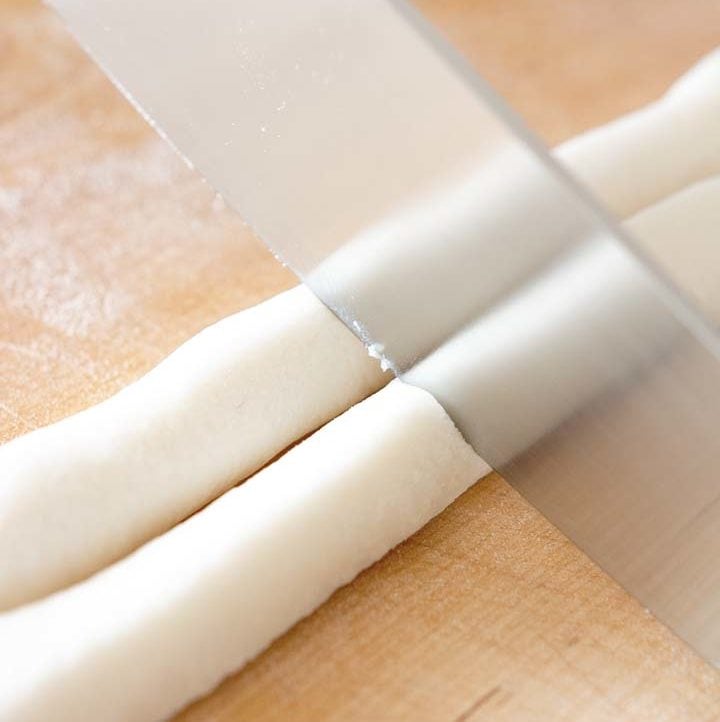








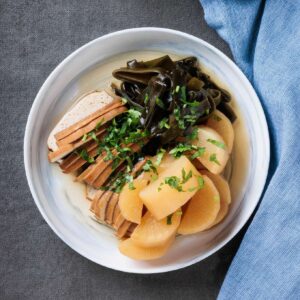


Jane Saunders says
Thankyou for opening my eyes to this dish. As it's totally new to me, I really appreciate all your step by step images and the preparation table guide. Very well done - thankyou.
cindy chou says
Thanks, Jane! I'm so glad you gave it a try and happy to hear you like it.
veenaazmanov says
Sounds like a unique and traditional recipe. This porridge looks so creamy and best for a quick and delicious breakfast treat. Thanks for your lovely recipe.
cindy chou says
Thank you. It works really well for breakfast since leftovers can be reheated easily ☺️
Kathryn Donangelo says
This recipe is delicious and a great way to use leftover pumpkin! Loved the sweet rice balls that accompanied this recipe. Great idea! Thank you!
cindy chou says
Thanks for giving it a try. So happy to hear you loved it!
Tara says
I love learning of unique flavors. Thanks you for sharing this recipe. I'm excited to make this for my family. I know they will love it!
cindy chou says
Hi Tara! So glad to hear this recipe will be a part of your family meals.
Tracy says
This is incredible. We loved it so much. So traditional and delicious!
cindy chou says
Thanks Tracy! Happy to hear you loved it 🙂
Jenny says
What a unique and beautiful dish! I love how delicate and colorful it is. I would love to try it. Normally I would be intimidated by something like this and fear I can't pull it off, but your detailed recipe is perfect and gives me everything I need. I will be making your lovely pumpkin porridge; it will be such a treat! Thank you so much!
cindy chou says
Thanks, Jenny! Let me know if you have any questions while making it. I'm happy to help!
Laura Arteaga says
Wow, I've never seen anything like this but I really want to try it now! I thought it was mango because of the colour, but Pumpkin is much more fun! Love the recipe, and the easy to follow instructions, thank you for sharing.
cindy chou says
Thanks, Laura! I hope you get to try it sometime, especially kabocha squash. It's sweeter than the usual pumpkin and makes the best porridge/soups.
Neha says
I have to say that garnish of rice balls look super cute! I adore pumpkin recipes during this time of the year, this will be next!
cindy chou says
Rice balls are cute, aren't they? They're so fun to eat too!
Sam says
Wow this looks delicious. I am always looking for new ways to cook with pumpkin. This sounds very interesting, will have to try it!
cindy chou says
Thanks Sam! Let me know if you give it try. Would love to hear how you like it.
Natalie says
What an interesting recipe. Sounds very delicious and very healthy. I think I never tried anything like this before. But I would love to make this for my family. Thanks for sharing this.
cindy chou says
Hi Natalie! It's pretty easy to make and a popular dish request from my private chef clients. Hope your family enjoys it too!